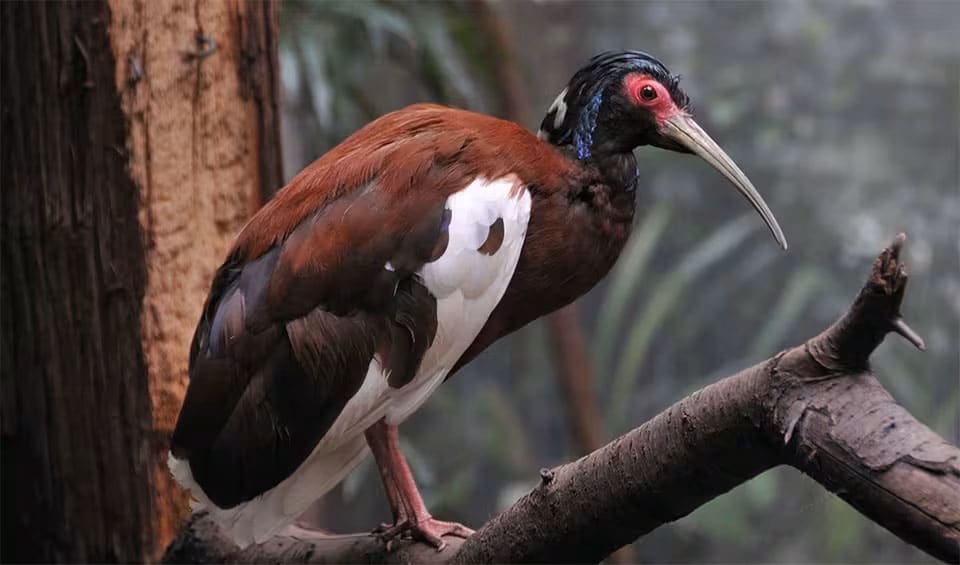This bird is notable for its deep, iridescent plumage, which varies from dark red to chestnut and green. It has a prominent crest of elongated feathers on the back of its head, which can be raised or lowered. The bird’s face is adorned with bare, red skin, and its long, curved bill is adapted for probing the soil for food. They are primarily found in a variety of wooded environments across Madagascar, including primary and secondary forests, as well as mangroves and the edges of freshwater lakes or rivers. The Madagascar ibis tend to prefer areas with dense canopy cover, which provides protection from predators and abundant food sources.
The Madagascar ibis is an omnivorous bird, feeding on a variety of food sources. Its diet includes insects, small reptiles, and crustaceans, which it finds by probing the mud with its curved bill. It also consumes berries and seeds, playing a role in seed dispersal, which contributes to the health of its habitat. The bird is often seen foraging in small flocks, particularly during the non-breeding season, which helps in locating food more efficiently.
Unfortunately, the Madagascar ibis faces several threats, primarily from habitat destruction due to deforestation and land conversion for agriculture. The degradation of forest habitats not only reduces nesting sites but also impacts the availability of food. Additionally, the bird is sometimes hunted for food and for the pet trade. While it is not currently listed as endangered, its population is believed to be declining, and conservation efforts are essential to prevent further decline.
Distribution
 Madagascar
Madagascar Official estimate
Official estimate
Anything we've missed?
Help us improve this page by suggesting edits. Glory never dies!
Suggest an editGet to know me
Terrestrial / Aquatic
Altricial / Precocial
Polygamous / Monogamous
Dimorphic (size) / Monomorphic
Active: Diurnal / Nocturnal
Social behavior: Solitary / Pack / Herd
Diet: Carnivore / Herbivore / Omnivore / Piscivorous / Insectivore
Migratory: Yes / No
Domesticated: Yes / No
Dangerous: Yes / No




